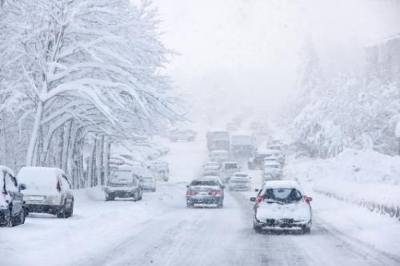Fremont Insurance Offers Advice for Winter Driving Ahead of the Return of the Polar Vortex
 |
FREMONT, MI--Jan. 20, 2014: Over the past several weeks, communities across Michigan have become increasingly familiar with the weather phenomenon known as a Polar Vortex. The resulting frigid temperatures and dangerous driving conditions have caught many people off guard causing numerous crashes. At least 21 deaths have been attributed to Polar Vortex conditions in 2014 and meteorologists are predicting another blast of arctic air in the coming days.
"Winter driving in Michigan can be extremely challenging under normal conditions which often include slick, wet, or snow-covered roads," said Kevin Kaastra, Chief Marketing Officer for Fremont Insurance. "When you add in the extreme cold resulting from a Polar Vortex, the result can be dangerous driving conditions that require even the most experienced and skilled drivers to use extreme caution."
Fremont Insurance offers these 10 Safety Tips for Winter Driving to help Michigan drivers arrive safely and avoid costly accidents.
1. Start Clean – Be sure to completely clear snow and ice from all windows, lights, hood and roof for maximum visibility and to avoid having ice and snow fly off your vehicle. Law enforcement officials are on the lookout for "peephole drivers."
2. Light it Up – Before starting out, turn on your lights to increase your visibility to other motorists.
3. Slow it Down – Remember, posted speed limits are for dry pavement. Decrease speed on icy, snow-covered roads and allow extra distance between you and other vehicles.
4. Look Ahead – Watch the traffic well ahead for extra reaction time. Always drive defensively and give yourself a cushion of time to deal with wintery conditions.
5. Stay Away – Stay well back of maintenance vehicles and snowplows – at least 200 feet (it's the law) – and don't pass on the right. Use extreme caution when passing in a passing lane.
6. Pick a Lane – Avoid abrupt lane changes. There may be a snow ridge between lanes. Also, the passing lane may be in worse shape than the driving lane.
7. Take a Brake – Brake early and gently to avoid skidding. It takes more time and distance to stop in adverse conditions. If your wheels start to lock up, ease off the brake. Do not pump anti-lock brakes. The right way is to stomp and steer.
8. Watch for Signs – Watch for signs alerting you to slippery bridge decks and other areas prone to becoming slick, even when the rest of the pavement is in good condition.
9. Stay in Control – Don't use cruise control or overdrive in wintery conditions. Even a slight depression of your brakes to deactivate can cause loss of control on hidden slippery patches
10. Avoid Assumptions – Do not assume your vehicle can handle all conditions. Even four-wheel and front-wheel drive vehicles encounter trouble on winter roads. The false sense of security these vehicles offer can leave you less prepared to deal with emergency situations.
"Sometimes the best idea is to just stay home and avoid adverse conditions completely," advises Kaastra. "However, if that's not an option, the best advice would be to simply slow down. It seems like everyone is in a hurry to get somewhere these days, but always remember that it's better to arrive a few minutes late and be safe than to drive too fast for conditions and not arrive at all."


